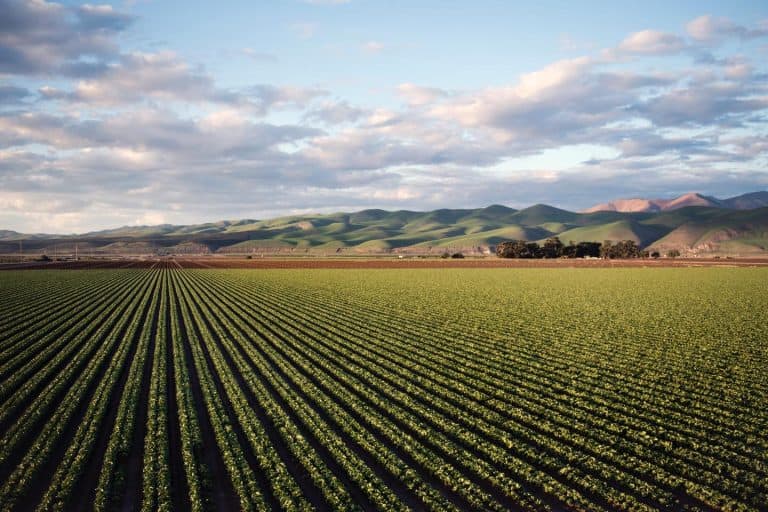In the ever-evolving world of fashion, agricultural-inspired fashion is emerging as a growing movement that combines style with sustainability.
With roots in regenerative agriculture and slow food movements, this innovative approach to design aims to create a harmonious relationship between our wardrobes and the natural world. As consumers become increasingly conscious about their environmental impact, agricultural-inspired fashion offers an eco-friendly alternative that caters to both aesthetic desires and ethical values.
This blog post will delve into the intricacies of sustainable fashion practices inspired by regenerative farming techniques, discuss pioneers leading the charge in this unique niche, and explore how these principles can bridge the gap between slow food and slow fashion movements. By understanding challenges faced by small-scale producers within this industry, we can gain insight into potential solutions for rethinking clothing production from seed to final product – all while appreciating notable pioneers who are transforming the way we wear clothes.
Table of Contents:
- The Rise of Agricultural-Inspired Fashion
- Christy Dawn Farm – A Pioneer in Sustainable Fashion
- Challenges Faced by Small-Scale Producers in the Sustainable Fashion Industry
- Rethinking Clothing Production from Seed to Final Product
- Notable Pioneers in Agricultural-Inspired Fashion
- FAQs in Relation to Agricultural Inspired Fashion
- Conclusion
The Rise of Agricultural-Inspired Fashion
Imagine a world where sustainable fashion and regenerative agriculture come together to create a healthier environment for all. Sounds amazing, right?
Regenerative Farming Techniques for Sustainable Fashion
Well, that’s exactly what agricultural-inspired fashion is all about. This growing movement aims to revolutionize the way we wear clothes by incorporating regenerative farming techniques into textile production.
Consumer Consciousness Driving Demand for Eco-Friendly Apparel
The best part? This trend is driven by you – the conscious consumer who values both style and sustainability in your wardrobe choices.
Agricultural Techniques Transforming the Fashion Industry:
- Taking Cues from Nature: Inspired by organic cotton farms using trap crops like marigolds to attract bees and repel pests naturally, designers are learning how interconnected systems can improve clothing production processes too.
- Mimicking Natural Ecosystems: By observing nature surrounding us during pre-industrial revolution times when everything was connected within closed loops of energy flow without waste generation or pollution emission, these pioneers seek ways of integrating similar principles into their work today.
- Supporting Regenerative Farms: Fashion brands are partnering with regenerative farms to source materials that not only look good but also contribute positively towards food production and soil health.
So, what’s the takeaway? Agricultural-inspired fashion is more than just a trend – it’s a powerful force driving positive change in both the fashion industry and our natural world. If you’re passionate about sustainable living, this movement might be your perfect match for style-conscious choices that truly make a difference.
Learn more about sustainable fashion and how it’s transforming the fashion industry.
Christy Dawn Farm – A Pioneer in Sustainable Fashion
Let’s talk about Christy Dawn Farm, a game-changer in the world of sustainable fashion.
Owned by the Baskauskas family, this farm is taking an innovative approach to clothing production by using leftover deadstock fabrics. This not only reduces waste but also contributes to their zero-waste philosophy.
Utilizing Deadstock Fabrics for Zero-Waste Clothing Production
Deadstock fabrics are those that have been left unused and discarded by other fashion brands due to overproduction or design changes. Rather than letting these materials go to waste, Christy Dawn repurposes them into beautiful and unique garments with a purpose.
Promoting Biodiversity Through Intercropping Methods
The farm doesn’t stop at fabric recycling; they’re also committed to promoting biodiversity within their ecosystem through intercropping methods. Intercropping involves planting different crops alongside each other to help them grow more efficiently while supporting soil health and reducing pests naturally.
- Trip Crops: By planting trap crops around their main crop, they can attract pests away from the valuable plants. This minimizes damage without resorting to harmful chemicals. Learn more about trap crops here.
- Attracting Bees: Christy Dawn Farm also plants flowers to attract bees, which are essential for pollination and maintaining a healthy ecosystem. Discover the importance of bees in agriculture here.
Inspired by the natural world surrounding them, the Baskauskas family is leading the way in sustainable fashion practices while nurturing their farm’s environment at the same time. Christy Dawn Farm serves as an example of how agricultural-inspired fashion can not only be stylish but also contribute positively to our planet’s health.
Bridging the Gap Between Slow Food and Slow Fashion Movements
Slow food, meet slow fashion. These two movements share a common goal: promoting sustainability and conscious consumption in their respective industries. However, the fashion industry has a long way to go in terms of sustainability, and regenerative agriculture could be the key to making a change.
Regenerative agriculture is a growing movement that focuses on rebuilding soil health and biodiversity through farming practices that mimic nature surrounding the farms. By utilizing trap crops and regenerative farming techniques, such as carbon sequestration and reduced use of chemicals, the fashion industry can reduce its environmental impact.
But what does regenerative agriculture have to do with fashion design? The fashion sector is a significant contributor to global contamination, and the use of artificial materials which are damaging to nature. By using regenerative farms to grow organic cotton and other sustainable materials, the fashion industry can reduce its impact on the environment and promote slow fashion.
Slow fashion is a growing movement that focuses on creating clothing that is made to last, using sustainable materials and ethical production practices. By embracing regenerative agriculture and sustainable fashion design, we can create a more regenerative and sustainable future for both the fashion industry and the food industry.
So, let’s bridge the gap between slow food and slow fashion by embracing regenerative agriculture and sustainable fashion design. Together, we can create a more sustainable and regenerative future for our planet.
Challenges Faced by Small-Scale Producers in the Sustainable Fashion Industry
Let’s face it.
Transitioning to sustainable fashion is not a walk in the park, especially for small-scale producers.
One major challenge they face is convincing consumers about the higher costs of their eco-friendly garments compared to mass-produced alternatives made overseas under questionable working conditions. Business of Fashion highlights this issue as one of the barriers faced by sustainable fashion brands.
Overcoming Misconceptions about Pricing of Sustainably Produced Garments
Educating consumers on the true cost of sustainable fashion, including fair wages and environmentally friendly materials, can help change perceptions around pricing.
In addition, showcasing transparency through supply chain audits and certifications like Global Organic Textile Standard (GOTS) can boost consumer trust and justify higher price points.
Addressing Quality Control Issues within Global Supply Chains
The complexity of global supply chains often leads to quality control issues that impact sustainability efforts negatively – think pollution caused during transportation or unethical labor practices at factories abroad.
- Solution #1: Partner with local suppliers who share your commitment to sustainability. This reduces shipping distances and strengthens relationships with trusted partners.
- Solution #2: Implement strict quality control measures and work closely with suppliers to ensure they adhere to ethical labor practices.
Small-scale producers can have a big effect on the sustainable fashion sector and contribute to creating a more environmentally friendly future by directly addressing these issues. Remember, every little step counts.
Rethinking Clothing Production from Seed to Final Product
Let’s take a broader view and explore the entire cycle of clothing production – from seed to final product.
In order to embrace agricultural-inspired fashion, we need to understand the entire journey of our clothes – from seed to garment.
To ensure environmental sustainability, regenerative agriculture is the key, as it helps to improve soil health while simultaneously reducing carbon emissions.
Step #1: Choose sustainable raw materials such as organic cotton or trap crops that attract bees and promote biodiversity within nature surrounding farms.
Step #2: Support local businesses by sourcing fabrics and materials produced through ethical means. This includes fair labor practices, minimal waste production, and eco-friendly dyes.
Step #3: Embrace slow fashion principles by investing in high-quality garments designed for longevity. This helps reduce textile waste while promoting a more conscious consumer culture.
Beyond purchasing decisions, it’s crucial we consider how we dispose of our clothing once they’ve reached their end-of-life stage.
- Actionable Tip 1: Educate yourself on proper recycling methods for different types of textiles. Check out this helpful guide on how to recycle clothing.
- Actionable Tip 2: If your garments are still wearable but no longer suit your style or needs, consider donating them to local charities or hosting a clothing swap with friends.
- Actionable Tip 3: Upcycle your old clothes into something new and useful, like turning an old t-shirt into a reusable shopping bag. Get inspired by these upcycling ideas.
By rethinking our approach to fashion from seed to final product, we can make more informed choices that benefit both the environment and ourselves.
Are you ready to join the growing movement of agricultural-inspired fashion?
Dive deeper into sustainable fashion practices with this beginner’s guide on sustainable fashion.
To embrace agricultural-inspired fashion, we need to understand the journey of our clothes from seed to garment. We can make informed choices by choosing sustainable raw materials, supporting local businesses with ethical means, and embracing slow fashion principles for longevity. Additionally, proper recycling methods or upcycling old clothes can reduce textile waste and benefit both the environment and ourselves.
Notable Pioneers in Agricultural-Inspired Fashion
Let’s dive into the world of agricultural-inspired fashion and meet some trailblazers who are making waves in this growing movement.
Lady Farmer: Founded by a mother-daughter duo in 2016, Lady Farmer is all about simplifying women’s lives through sustainable fashion. They offer eco-friendly clothing options that promote both style and comfort.
California Cloth Foundry: Lydia Wendt, founder of California Cloth Foundry, set out on a mission to create beautiful, high-quality garments while remaining environmentally conscious. Her dedication to sustainability has made her brand an industry leader.
Ashley Denisov: This passionate designer focuses on sourcing sustainable materials for her creations. Ashley Denisov’s eponymous label emphasizes ethical production practices and supports regenerative farms throughout its supply chain.
Their innovative approaches showcase how agricultural-inspired fashion can be both stylish and earth-friendly at the same time.
Supporting Local Businesses with Farm-to-Fashion Initiatives
- Fibershed: This non-profit organization connects farmers, designers, and consumers within their local communities. By promoting regional fiber systems, they help support small-scale producers while reducing carbon emissions from transportation. Learn more about Fibershed here.
- Eileen Fisher: The well-known fashion brand has launched a farm-to-closet initiative, using organic cotton sourced from regenerative farms in the United States. This project aims to reduce their environmental impact and support local farmers. Discover Eileen Fisher’s sustainable collection.
Encouraging Consumer Awareness About Ethical Clothing Choices
As shoppers grow more cognizant of the ecological consequences of their apparel decisions, they are increasingly searching out labels that emphasize sustainability.
The Good Trade: A digital media platform that curates ethical and sustainable products for conscious consumers. They provide valuable resources to help shoppers make informed decisions about what they wear. Check out The Good Trade here.
Fashion Revolution: An annual campaign encouraging people to ask questions about where their clothes come from and how they were made. By raising awareness, Fashion Revolution hopes to create positive change within the industry. Join the Fashion Revolution movement.
This section highlights notable pioneers in agricultural-inspired fashion, such as Lady Farmer and Ashley Denisov, who prioritize sustainable materials and ethical production practices. It also discusses initiatives like Fibershed and Eileen Fisher’s farm-to-closet project that support local farmers while reducing carbon emissions. Additionally, it emphasizes the importance of consumer awareness about ethical clothing choices through resources like The Good Trade and Fashion Revolution.
FAQs in Relation to Agricultural Inspired Fashion
How does fashion design relate to agriculture?
Fashion design and agriculture are closely related, as many fabrics used in clothing production come from agricultural sources. Designers can incorporate sustainable practices by using organic fibers, such as cotton or hemp, which require fewer resources and have a lower environmental impact. Additionally, designers can support regenerative farming techniques that promote soil health and biodiversity.
How does agriculture impact clothing?
Agriculture impacts clothing through the cultivation of natural fibers like cotton, linen, silk, and wool. The way these crops are grown affects the quality of the material produced for garments. Sustainable agricultural practices reduce water consumption, pesticide use, and carbon emissions while improving soil health – ultimately leading to more eco-friendly apparel options.
What is regenerative agriculture in fashion?
Regenerative agriculture in fashion refers to farming methods that improve soil health while producing materials for textiles. These methods include crop rotation, cover cropping, no-till farming techniques among others. By adopting regenerative practices within textile supply chains, it contributes towards reducing environmental impacts associated with conventional fiber production.
What are the agricultural products used to provide clothing?
Agricultural products commonly used in providing clothing include:
- Cotton: A soft fiber obtained from cotton plants
- Linen: Made from flax plant fibers
- Silk: Produced by silkworms fed on mulberry leaves
- Hemp: Obtained from Cannabis Sativa plant stalks
- Jute: Derived from Corchorus capsularis or Corchorus olitorius plants
- Wool: Sourced from sheep, alpacas, and other animals with a wooly coat
Conclusion
Agricultural-inspired fashion is a growing trend that combines sustainability and style. As consumers become more conscious about the impact of their choices, designers are turning to regenerative farming techniques and deadstock fabrics for eco-friendly apparel production.
Christy Dawn Farm is a pioneer in sustainable fashion, promoting biodiversity through intercropping methods while supporting local businesses with farm-to-fashion initiatives. However, small-scale producers still face challenges such as misconceptions about pricing and quality control issues within global supply chains.







